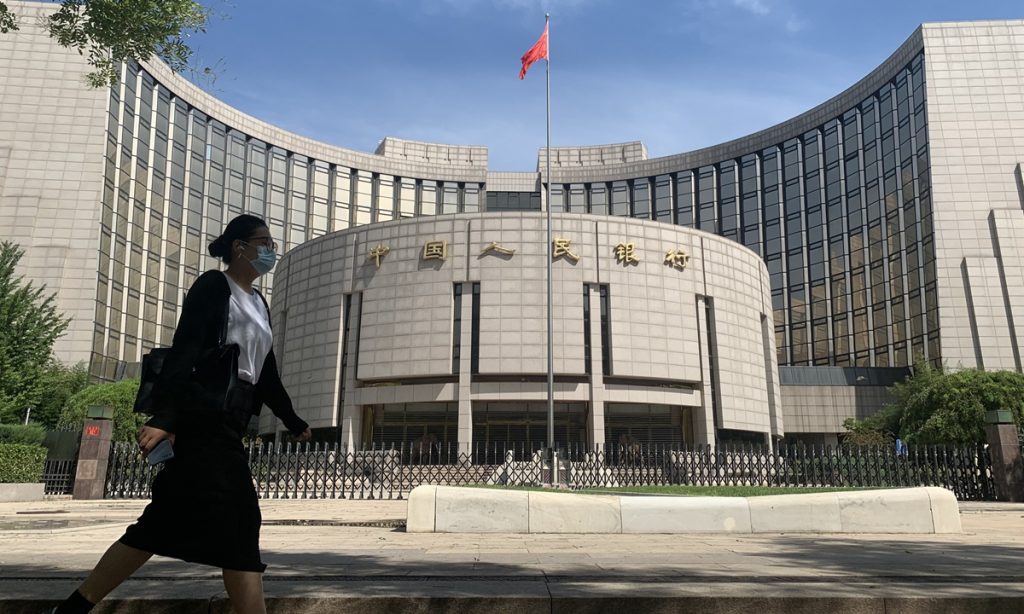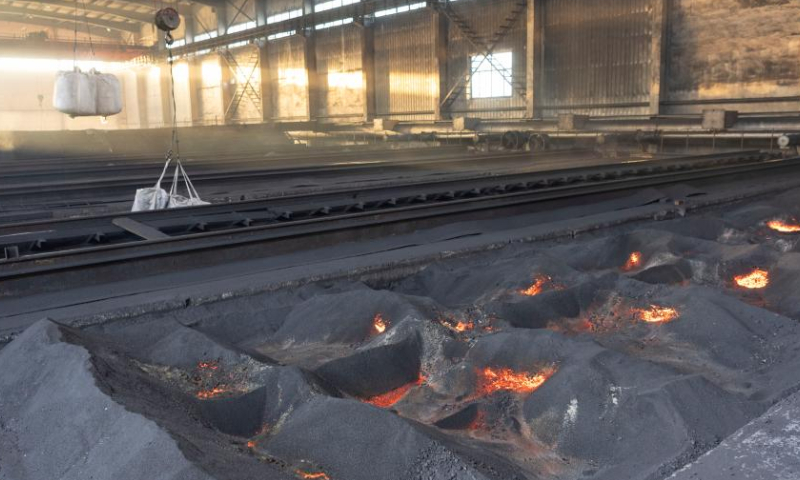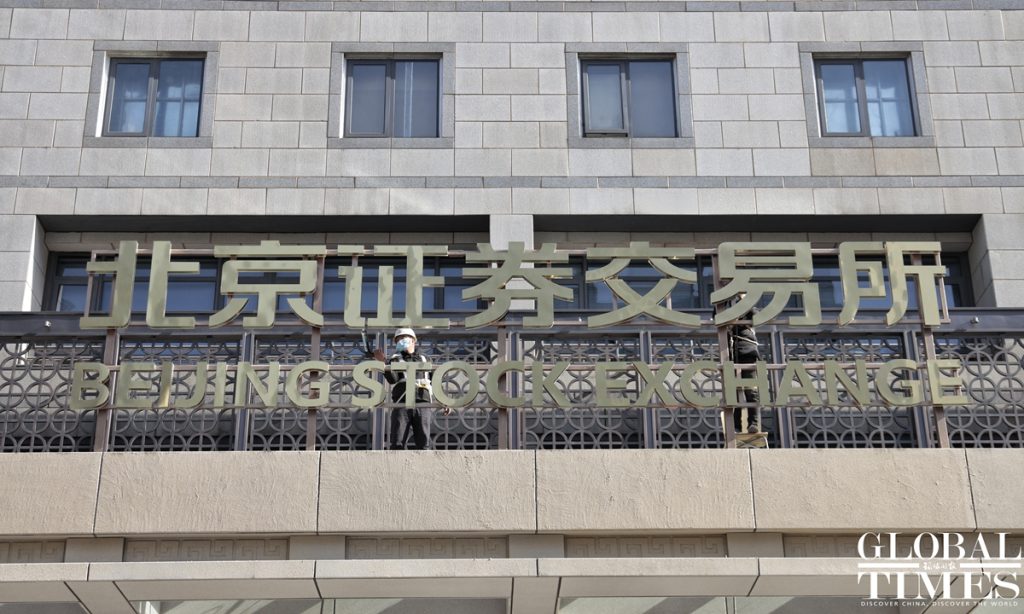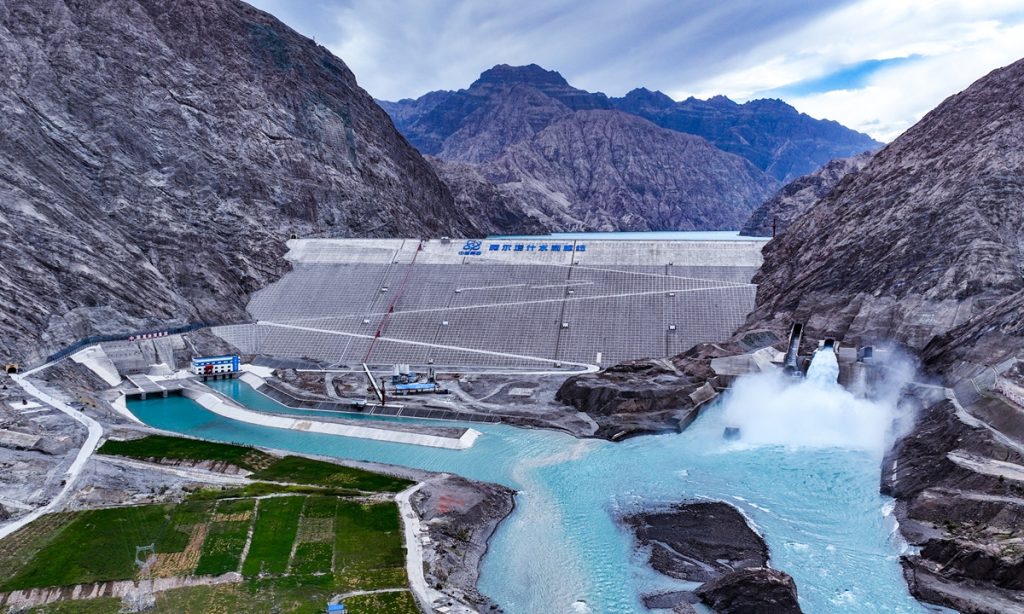Flagship project of China-Namibia mining cooperation empowers locals, especially women, in Africa

Editor's Note:
The 2024 Forum on China-Africa Cooperation (FOCAC) Summit is being held in Beijing from September 4 to 6. The theme of this year's summit is "Joining Hands to Advance Modernization and Build a High-Level China-Africa Community with a Shared Future." In light of this key event, the Global Times launches a series of China-Africa stories, including interviews with political leaders, stories of exchanges between young people from China and African countries, and intensive cooperation in various fields. Through these stories, we will see how China and Africa are deepening their ties and building a brighter future together.
In Southern Africa, the Namib, a coastal desert stretching more than 2,000 kilometers along the Atlantic Ocean, is one of the oldest and driest deserts in the world. With little rainfall there, almost no grass grows. However, as the waves crash against the endless and distinctive sand dunes, illuminated by the ever-changing light and shadow of nature, a breathtaking symphony of sand and sea unfolds, creating the unparalleled beauty that is Namibia.
Driving through the heart of the Namib Desert, people can see from afar a Five-Starred Red Flag - China's national flag - fluttering in the wind.
In an open-pit uranium mine, thousands of Chinese and African people work hard under the scorching sun. Crushing equipment, water treatment plants, settling ponds, calciners, and other large equipment are laid out on the ground in the distance, with mining trucks shuttling back and forth, and workers busy with their duties.
This is the scene at the Rossing uranium mine, the largest and longest-operational open-pit uranium mine in the world. It is also a model of cooperation between China and Namibia. It is one of China's most important mining investments and projects in Namibia, producing about 5 percent of the world's uranium supply.
However, this Namibian landmark, once a "star enterprise," had faced difficulties in production and operation due to the sharp decline in natural uranium prices after the Fukushima nuclear accident in Japan. Declining production and aging equipment have left local employees lacking confidence in the future, fearing the risk of closure at any time. The Rossing uranium mine thus became known in the industry as the "Old Lady" struggling to move forward.
However, changes began to take place when a Chinese company came to the scene.
In July 2019, the state-owned China National Nuclear Corporation (CNNC) and the multinational corporation Rio Tinto completed the handover of the Rossing uranium mine, officially taking over the project and bringing new vitality to the mine that was originally scheduled to be shut down.
The Rossing project has now become a "ballast stone" for the natural uranium supply guarantee for nuclear power and a "propeller" for deepening global uranium mining capacity cooperation. The CNNC's acquisition and investment in the mine changed not only the fate of the desert mine, but also the fate of mine workers and many Namibians.
Under the China-proposed Belt and Road Initiative and the China-Africa Cooperation Forum mechanism, economic and trade cooperation between China and Africa is becoming increasingly close. More and more Chinese companies are investing and developing in Africa, growing together with the African market. These companies provide employment opportunities, conduct skills training, and cultivate batches of outstanding local talents. With the accelerated pace of Chinese companies "going global," the social status and labor skills of African women are also steadily improving.
After the CNNC acquisition, the Rossing project has not only created employment opportunities for many local women, but has also improved their economic and social status. More importantly, it has cultivated a group of high-quality female employees, empowering them to live independent and self-reliant lives.
Equally treated
Angela Kapapilo, principal resource geologist at the Rossing uranium mine, is one of the representatives. Angela joined Rossing in November 2010. After the CNNC acquisition, the company actively introduced new technologies and equipment, and the production has reached record highs year after year.
At the same time, the company has conducted efficient research on extending the life of the mine and restarted the Z20 uranium deposit exploration project. Kapapilo was then appointed as principal resource geologist, in charge of leading the Z20 exploration project, including geological, resource, geotechnical engineering, as well as hydrogeological research.
The Z20 deposit is currently in the deep exploration stage, with plans to drill over 30,000 meters by 2024-25. This will provide strong support for the feasibility study of developing over 50,000 tons of resources in the Z20 deposit and lay an important foundation for extending the life of the Rossing uranium mine for another 20 years.
"In the years working at the Rossing, I have gained experience in different positions. Serving as the principal resource geologist is a highlight of my career, thanks to the training provided by the CNNC. This is also a testament to the importance and cultivation of African employees by the Chinese company," Kapapilo told the Global Times.
While working at the Rossing, Kapapilo said, she feels that Chinese enterprises treat every employee equally, enabling them to have the opportunity to become a leader. Especially in the mining industry, being able to achieve personal ambition as a woman gives her a great sense of accomplishment. With the help of the Chinese company, she completed a master's degree in geology. Learning advanced geostatistics and machine learning techniques sharpened her ability to make wise decisions in mineral resource management.
The flexible working arrangements in the Chinese company also allowed her to better balance work and family responsibilities.
"I often take work home while also pursuing part-time studies and other personal interests, so the challenge is mainly around ensuring that I am a supportive and intentional parent. I do my best to achieve a work-life balance by following a schedule, and ensuring family time is prioritized," she said.
Kapapilo would often go to the mine, where vegetation is sparse, rocks are exposed, rainfall is scarce, and the wind is strong, to track project progress, identify problems, gather information, and seek solutions. Under her leadership, Chinese and local employees work closely together to complete their tasks on time.
"All Rossing employees have benefited from the CNNC acquisition, as the alternative would have been the mine closure, leading to an increased number of unemployed Namibians. The recent approval of the Phase 4 plan to extend the life of the mine to 2036 means that most employees will be employed beyond the original 2026. Furthermore, Rossing procures a significant number of supplies and services from Namibian companies, and the company's improved profitability in the last few years has contributed to company income tax revenue for our government," Kapapilo said. "This means that the benefit of Rossing's continued operations via the investment by the CNNC positively impacts the livelihoods of not just Rossing employees, but also the broader Namibian society."
Heartwarming and practical actions
The Global Times learned from the CNNC that the Rossing uranium mine, through the establishment of the Rossing Foundation, supports local medical, educational, and sports projects, with its footprint covering the entire Namibia.
The Rossing uranium mine has maintained a local procurement rate of about 75 percent annually, effectively driving local economic development. It also provides employment opportunities for about 1,000 direct employees and about 1,200 contractor employees, indirectly benefiting more than 10,000 people.
Besides actively cooperating with technical schools, the mine has launched female youth entrepreneurship training programs. Since 2019, eight young women in Namibia have successfully established their own businesses with the support of the Rossing.
Education conditions in Namibia are poor, especially in rural and remote areas where resources are severely lacking. Working with UNICEF and the Namibian Ministry of Education, the Rossing has also helped improve the quality of education in remote schools in the country. In 2023, the company donated materials, textbooks and teaching equipment to schools, as well as established three classes for mathematics, physics, and chemistry across Namibia, providing training courses for nearly 3,000 students.
These heartwarming and practical actions have benefited more Namibians, earning strong support from the local government and high recognition from the surrounding communities.
Namibian Minister of Mines and Energy Tom Alweendo said at a press conference held in Namibian capital Windhoek in June that Namibia's mining industry is one of the largest contributors to the country's economy, with Chinese investment playing a significant role in the development of the uranium mining sector.
In 2023, Namibia's mining sector contributed up to 14.4 percent of the country's GDP, Alweendo said, noting that Chinese investment has been instrumental in establishing Namibia as one of the world's largest producers of uranium, according to the Xinhua News Agency.
The longer Kapapilo works with Chinese employees, the more she intuitively feels the benefits of the latest technology brought along by Chinese enterprises.
"Since my interactions with Chinese colleagues in 2019, I have been directly exposed to the technological innovations within the CNNC and Chinese companies. There was one instance during which we wanted to source a particular technology based on internal metallurgical test results. However, no suitable product was available on the market. Our supply chain general manager then introduced us to a Chinese institution, which used the information we gained from metallurgical tests to help design a suitable solution," she said.
In March this year, Kapapilo came to visit Beijing and Central China's Hunan Province. She was very impressed by the hospitality of the Chinese people, the diversity of Chinese cuisines, the richness of Chinese culture, and the level of Chinese technological advancements.
During the interview, she shared an interesting experience with the Global Times.
"I normally wear masks because I have allergic reactions to various airborne respiratory tract irritants. I was pleasantly surprised when I realized there were almost no fumes from vehicles on the roads as all the vehicles we saw were electric! It gave me an impression of what carbon neutral could look like, albeit far into the future for most countries in Africa."







